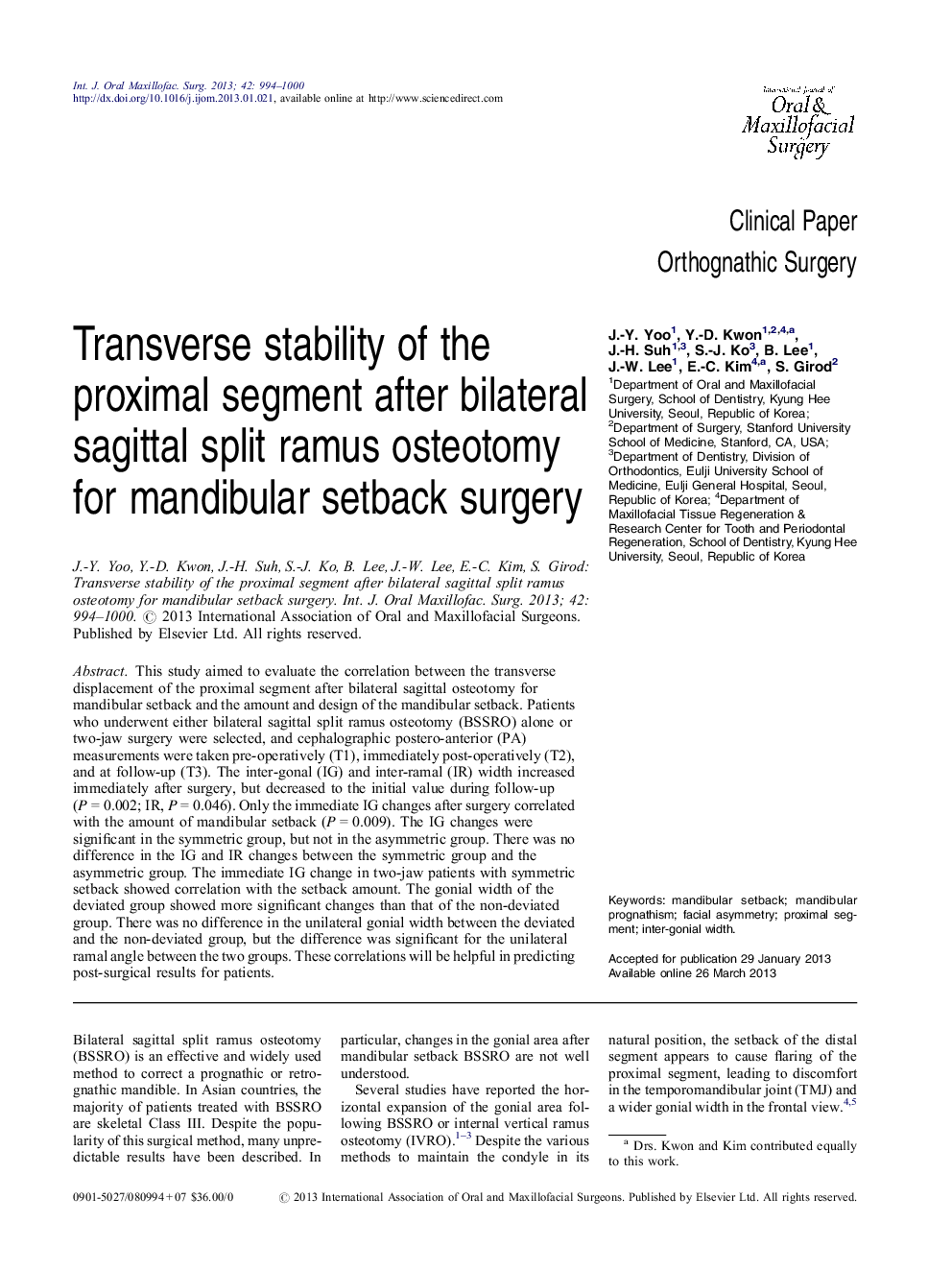| Article ID | Journal | Published Year | Pages | File Type |
|---|---|---|---|---|
| 3132659 | International Journal of Oral and Maxillofacial Surgery | 2013 | 7 Pages |
This study aimed to evaluate the correlation between the transverse displacement of the proximal segment after bilateral sagittal osteotomy for mandibular setback and the amount and design of the mandibular setback. Patients who underwent either bilateral sagittal split ramus osteotomy (BSSRO) alone or two-jaw surgery were selected, and cephalographic postero-anterior (PA) measurements were taken pre-operatively (T1), immediately post-operatively (T2), and at follow-up (T3). The inter-gonal (IG) and inter-ramal (IR) width increased immediately after surgery, but decreased to the initial value during follow-up (P = 0.002; IR, P = 0.046). Only the immediate IG changes after surgery correlated with the amount of mandibular setback (P = 0.009). The IG changes were significant in the symmetric group, but not in the asymmetric group. There was no difference in the IG and IR changes between the symmetric group and the asymmetric group. The immediate IG change in two-jaw patients with symmetric setback showed correlation with the setback amount. The gonial width of the deviated group showed more significant changes than that of the non-deviated group. There was no difference in the unilateral gonial width between the deviated and the non-deviated group, but the difference was significant for the unilateral ramal angle between the two groups. These correlations will be helpful in predicting post-surgical results for patients.
